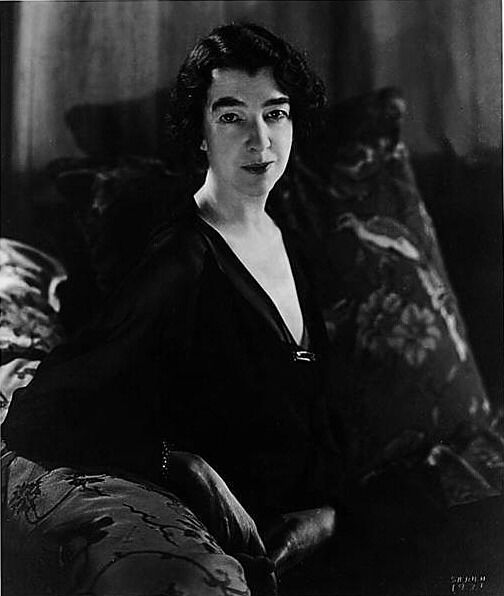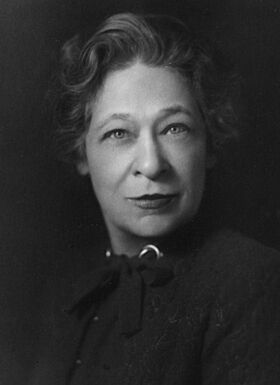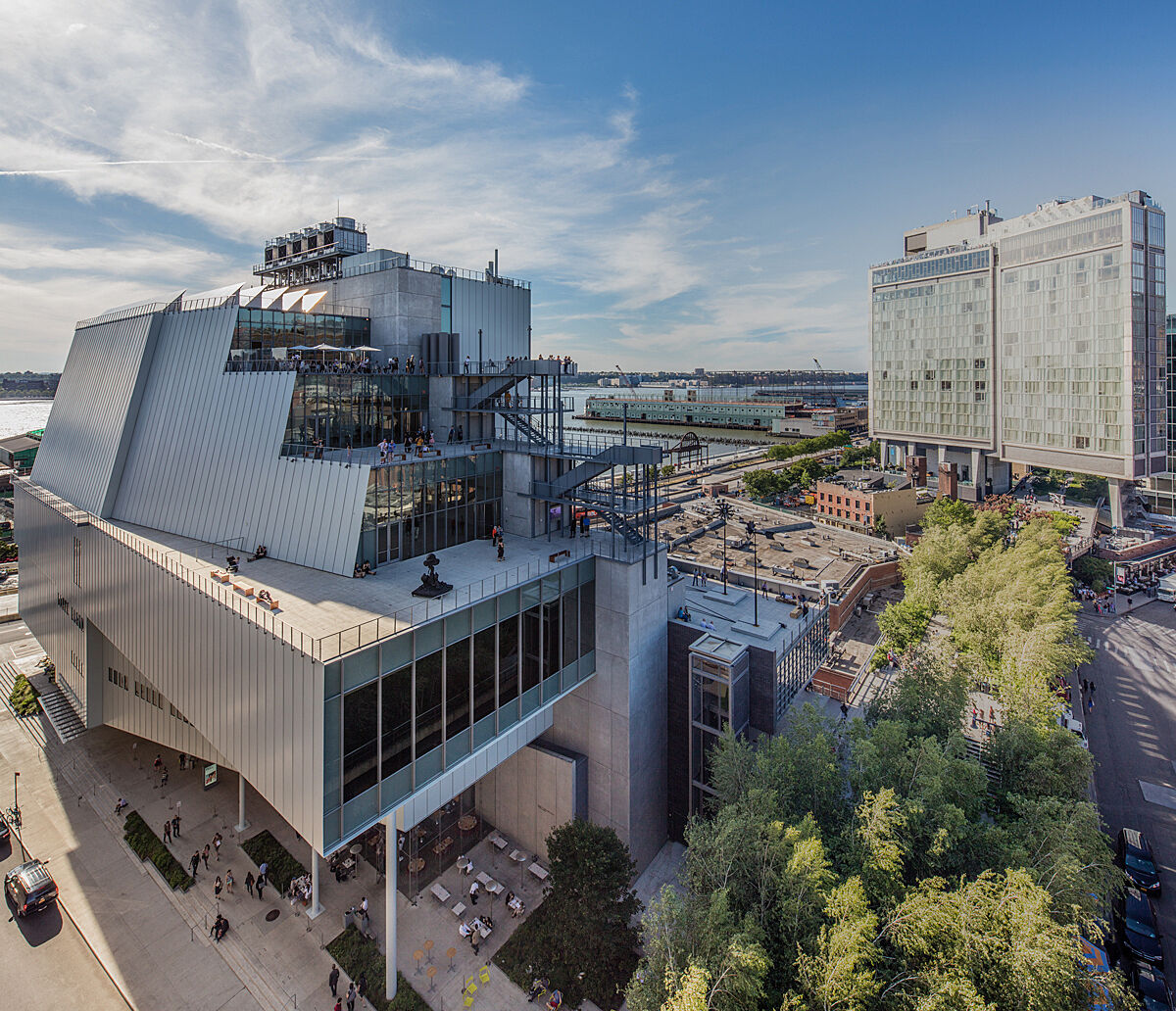Whitney History
Founding
At the beginning of the twentieth century, sculptor Gertrude Vanderbilt Whitney saw that American artists with new ideas had trouble exhibiting or selling their work. She began purchasing and showing their artwork, eventually becoming the leading patron of American art from 1907 until her death in 1942.
In 1914, Mrs. Whitney established the Whitney Studio in Greenwich Village, where she presented exhibitions by living American artists whose work had been disregarded by the traditional academies. She had assembled a collection of more than five hundred pieces by 1929. After her offer of this gift to the Metropolitan Museum of Art was declined, she set up her own institution, one with a distinctive mandate: to focus exclusively on the art and artists of this country. The Whitney Museum of American Art was founded in 1930, and opened in 1931 on West Eighth Street near Fifth Avenue.
Following a move in 1954 to an expanded site on West 54th Street, the Whitney opened the Marcel Breuer-designed building on Madison Avenue at 75th Street to the public in 1966. The iconic building housed the Museum from 1966 through October 20, 2014. The Whitney’s current building at 99 Gansevoort Street opened on May 1, 2015.
Innovation has been a hallmark of the Whitney since its beginnings. It was the first museum dedicated to the work of living American artists and the first New York museum to present a major exhibition of a video artist (Nam June Paik, in 1982). Such important figures as Jasper Johns, Jay DeFeo, Glenn Ligon, Cindy Sherman, and Paul Thek were given their first comprehensive museum surveys at the Whitney. The Museum has consistently purchased works within the year they were created, often well before the artists who created them became broadly recognized.
The Whitney was also an innovator in taking its exhibitions and programming beyond its own walls, opening branch museums in other parts of New York City and the surrounding area. These free-of-charge, corporate-sponsored branches operated as standalone spaces with their own staffs, serving as training grounds for curators including Thelma Golden, Shamim Momin, Lisa Phillips, and Debra Singer. The exhibitions and programming at these locations not only allowed the public more access to the Whitney’s collection, but also met the needs of experimental artists by providing large spaces and performance opportunities. The last of the branches closed in 2008.
The Collection
The Whitney’s collection includes over 25,000 works created by more than 3,600 artists in the United States during the twentieth and twenty-first centuries. At its core are Museum founder Gertrude Vanderbilt Whitney’s personal holdings, totaling some six hundred works when the Museum opened in 1931. These works served as the basis for the founding collection, which Mrs. Whitney continued to add to throughout her lifetime. The founding collection reflects Mrs. Whitney’s ardent support of living American artists of the time, particularly younger or emerging ones, including Peggy Bacon, George Bellows, Stuart Davis, Charles Demuth, Mabel Dwight, Edward Hopper, Yasuo Kuniyoshi, Reginald Marsh, and John Sloan. This focus on the contemporary, along with a deep respect for artists’ creative processes and visions, has guided the Museum’s collecting ever since.
The collection begins with Ashcan School painting and follows the major movements of the twentieth century in America, with strengths in modernism and Social Realism, Precisionism, Abstract Expressionism, Pop art, Minimalism, Postminimalism, art centered on identity and politics that came to the fore in the 1980s and 1990s, and contemporary work. The highlights of the collection are definitive examples of their type, but there is also much variety and originality in works by less well-known figures. The collection includes all mediums; over eighty percent is works on paper.
The Whitney has deep holdings of the work of certain key artists, spanning their careers and the mediums in which they worked, including Alexander Calder, Nicole Eisenman, Jasper Johns, Glenn Ligon, Brice Marden, Agnes Martin, Georgia O’Keeffe, Claes Oldenburg, Laura Owens, Ed Ruscha, Cindy Sherman, Gary Simmons, Lorna Simpson, and David Wojnarowicz.
In 2023, the Whitney completed its first-ever Collection Strategic Plan, a multi-year research project made possible by a generous grant from the Henry Luce Foundation. Drawing on expertise and input from across the Museum and in consultation with external colleagues, the Collection Strategic Plan serves as a record of this process and sets forth recommendations that guide how the collection is used, considerations around its care and growth, and intentions around our work with living artists.
Exhibitions
Since its inception in 1931, the Whitney has championed American art and artists by assembling a rich permanent collection and featuring a rigorous and varied schedule of exhibition programs. Emphasizing seminal artists and artworks from the twentieth and twenty-first centuries, the Museum organizes important exhibitions both from its holdings and from the collections of individuals and institutions worldwide.
Exhibitions range from historical surveys and in-depth retrospectives of major twentieth-century and contemporary artists to group shows introducing young or relatively unknown artists to a larger public. The Biennial, an invitational show of work produced in the preceding two years, was introduced by Gertrude Vanderbilt Whitney in 1932. It is the longest-running series of exhibitions to survey recent developments in American art. The Whitney also has presented acclaimed exhibitions of film and video, architecture, photography, and new media.
Museum Directors
- Scott Rothkopf, 2023–Present
- Adam D. Weinberg, 2003–2023
- Maxwell L. Anderson, 1998–2003
- David A. Ross, 1991–1998
- Thomas N. Armstrong III, 1974–1991
- John I. H. Baur, 1968–1974
- Lloyd Goodrich, 1958–1968
- Hermon More, 1948–1958
- Juliana Force, 1930–1948
The Building
Designed by architect Renzo Piano and situated between the High Line and the Hudson River, the Whitney's building in the Meatpacking District vastly increases the Museum’s exhibition and programming space, providing the most expansive view ever of its unsurpassed collection of modern and contemporary American art.



